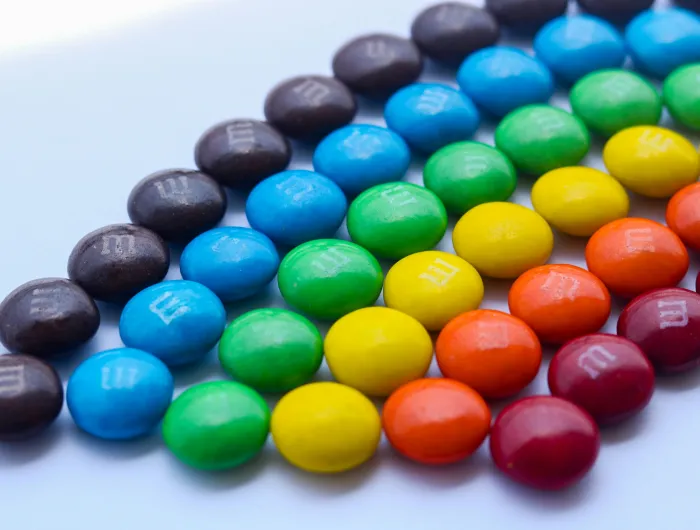CSPI urges federal and state regulators to accelerate progress on food dyes

Irfan Zaini - unsplash.com.
A third of the biggest food companies have no plans to reformulate
A third of the nation’s 24 biggest food companies have not provided any public plans to remove synthetic food dyes, according to a new tracking resource released by the Center for Science in the Public Interest. Because so many major manufacturers are seemingly ignoring Health and Human Services Secretary Robert F. Kennedy, Jr.’s request that companies voluntarily phase these dyes out by the end of 2026, CSPI says the Food and Drug Administration must use its regulatory authority to accelerate companies’ progress, an action it can take once Congress resolves the healthcare funding crisis that has led to a government shutdown freezing regulatory activity.
CSPI’s new tracker, which covers commitments to remove synthetic dyes and titanium dioxide, found only 11 of the top 24 manufacturers have pledged to phase out dyes from all products, with others committing to only some products (1), offering unclear commitments (4), or providing no plan at all (8).
“In spite of headlines touting voluntary commitments by the food industry to remove synthetic dyes, parents can expect to see plenty of these dyes in their children’s trick or treat bags this year,” said CSPI president Dr. Peter G. Lurie. “We call on the FDA to apply its scientific judgment to regulate these chemicals as unsafe, which it can do by restricting their use in food or requiring a warning label similar to warnings already adopted in Europe.”
CSPI has been urging the FDA to protect consumers from synthetic food dyes since 2008 because of the dyes’ demonstrated impact on some children’s behavior. Studies show that certain children who consumed dyes exhibited hyperactivity or other behavioral problems. Indeed, a review of the science on food dyes by California’s environmental health regulators found that dyes “can cause or exacerbate neurobehavioral problems in some children.”
The Biden administration used its regulatory authority to ban the carcinogenic food dye Red 3 in January, shortly before the Trump administration assumed office. Kennedy and FDA Commissioner Dr. Marty Makary apparently do intend to use their regulatory authority to ban two dyes that are mostly no longer used, Citrus Red 2 and Orange B, but not with the dyes that are widely used in the food supply, such as Red 40, Yellow 5, and Yellow 6. So far, Kennedy and Makary have mostly relied on public pressure and state-level restrictions on dyes to spur voluntary commitments on the part of food companies.
America’s biggest companies have reacted to Kennedy’s pressure unevenly. The Campell’s Company, Conagra, General Mills, Grupo Bimbo, Hershey, Kellanova, WK Kellogg Co, Kraft Heinz, Nestle, J.M Smucker Co., and Tyson have all announced plans to get rid of dyes in all their products. (General Mills committed to removing dyes from cereals in 2015 but reverted to their use in 2017.)
However, Coca-Cola, Fererro, Flower Foods, Keurig Dr Pepper, Mars, McKee Foods, Post Holdings, and Unilever have made no such commitments. Some companies, like PepsiCo, apply their commitments only to a fraction of the company’s products. In PepsiCo’s case, the commitment only extends to foods sold in schools and the Lay’s and Tostitos product lines. Many other companies’ policies are unclear or vague.
Unsurprisingly, the companies that use dyes the most are less likely to share Kennedy’s “understanding” that they should eliminate food dyes, according to CSPI. Of the top five users of dyes in 2020, only Hershey has announced plans to eliminate dyes from all its products.
Ferrero, for instance, the maker of SweeTarts, Nerds, Brach’s, and many popular candy bars, used food dyes in 60 percent of its products in 2020, and has announced no plans to eliminate them. The same is true for Mars, which famously backed out of a 2016 commitment to phase out dyes from all products, including M&Ms, and which dyed 52 percent of its products as of 2020. (Mars did remove the white pigment titanium dioxide from its Skittles candies — a welcome move, according to CSPI — though that color additive is not on Kennedy’s phase-out list.)
“As anyone who has studied food industry voluntary commitments would know, companies sometimes make good on their commitments, sometimes they reverse their commitments, and sometimes their pledges are so narrowly tailored or vague as to be no commitment at all,” said Lurie. “We know Red 3 is not coming back because the Biden administration used regulation to get rid of it. Kennedy’s voluntary strategy opens the door for industry to offer empty promises and backtrack on its commitments when people stop paying attention.”
CSPI also supports ongoing state efforts to pass legislation regulating synthetic food dyes. So, in fact, does Secretary Kennedy. West Virginia has banned all synthetic dyes statewide, a move the synthetic color industry is fighting in court. Texas and Louisiana have each passed warning label requirements for dyed foods. Six states, including California, have banned dyes from school foods, and New York is considering doing the same. Two states, Delaware and Tennessee, have passed laws banning only Red 40 in school foods.
“In addition to federal action, we strongly encourage state legislatures and governors in both red and blue states to explore taking action to protect consumers from unsafe food ingredients,” Lurie said. “Food chemical safety is too important to cede to voluntary pledges from individual food companies.”
# # #
Tags
Topics
Contact Info: Lisa Flores, 202-777-8368 or Jeff Cronin, 202-777-8370

